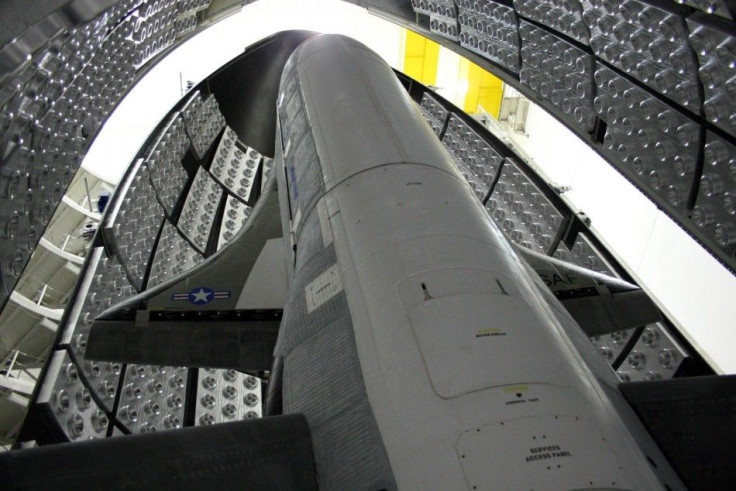Space weaponry in focus as US Air Force launches mysterious X-37B robotic plane

The U.S. Air Force's second mysterious robotic mini spacecraft, the X-37B Orbital Test Vehicle, blasted off from Cape Canaveral, carrying classified payload. Soon after the launch a media blackout shrouded the mission in secrecy, fueling speculation about its possible military purposes.
The Air Force has said the unmanned mission is intended to test out new spacecraft technologies. The launch of a second secret space mission in two years has given room for renewed space weaponry rumors though the Air force says the mission is only about testing out hardware for future space shuttles.
Partly as a result of the secrecy, some concern has been raised — particularly by Russia and China — that the X-37B is a space weapon of some sort, according to space.com.
The spacecraft, which was built by Boeing for the U.S. military, looks like a NASA space shuttle and has a payload bay about the size of a pickup truck bed.
The U.S. Air Force had launched the unmanned X-37B spacecraft in April last year. It was never fully explained if it was entirely a military project though Air Force officials did make a mention of the 'warfighter needs'. If these technologies on the vehicle prove to be as good as we estimate, it will make our access to space more responsive, perhaps cheaper, and push us in the vector toward being able to react to warfighter needs more quickly, an Air Force statement said at that time.
The craft, whose secretive mission fueled speculation about its warfare uses, returned successfully to Earth in December as planned and landed on its own. The X-37B was originally a NASA project.
Prompt Global Strike
The botched test flight of a hypersonic glide vehicle in April last year had created intense speculation about the U.S. revving up its space weaponry program. The U.S. Air Force was counting on the hypersonic glide vehicle to give it the capability to strike at targets anywhere in the world within one hour with conventional missiles.
The project, which was jointly executed by the Defense Advanced Research Projects Agency (DARPA) and the U.S. Air Force, was aimed at developing a conventional prompt global strike capability with the help of the Hypersonic Test Vehicle that can Mach 20 speeds.
But the test flight failed as the glider lost communication nine minutes into the launch from Vandenberg Air Force Base, California, though it had successfully separated from its booster rocket.
The U.S. Air Force had planned to have the first Conventional Strike Missile fielded at Vandenberg by 2015, according to a Global Security report. It would remain on alert, backed up by two spares, for potentially hitting a time-urgent target such as top terrorist leaders spotted at a hideout or a North Korean nuclear missile being readied for launch...
During the test, the vehicle was expected to fly roughly 5,700 kilometers in less than half an hour, the report had said.
There is also a prevailing thought that much of the existing space technologies have dual uses in military and civilian life, like the global positioning system which was conceived as a military technology but went on to have more civilian uses.
Many analysts have also said that any space program by any nation can have a military implication as anything that travels in the space can be a weapon if manoeuvred militarily. The whole issue is further complicated because beyond technologies like lasers, Rods from God, explosives, etc.... virtually any object traveling in space can be a weapon if it can be manoeuvred to run into another object, space.com quoted Joan Johnson-Freese, a space policy analyst at the Naval War College in Newport, as saying last year.
At the same time, there could also be the possibility that the U.S. Air Force is deliberately keeping its advanced space programs secretive just to confuse rivals.
Apart from the U.S., countries like China and India are actively using space technologies in a decidedly militaristic direction. While China has tested anti-satellite missile technology recently, India too has started developing an indigenous anti-satellite program.
China successfully tested an anti-satellite (ASAT) vehicle in 2007 and has since gone ahead with more advanced research. The Chinese ASAT had successfully hit the target and destroyed an inactive weather satellite. India said the Chinese technology was a threat to the entire world.
© Copyright IBTimes 2024. All rights reserved.











